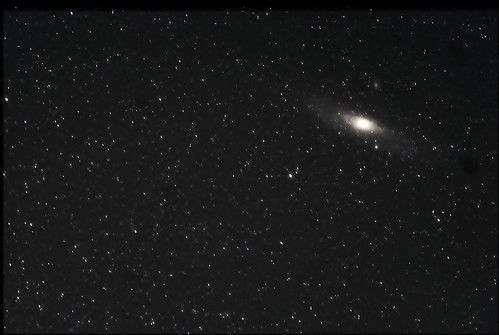Personal Essays
The Great Andromeda Galaxy: Project 365 - 2008.8.9

And what beauty the heavens hold. We have eyes that gather photons of light so that our brains may interpret the universe. These photons come at us directly, or reflect off objects and by doing so may lose some momentum, its frequency divided, modulated. Then our brain tells us what meaning, what shape and colour to assign these packets of energy.
Before telescopes were in widespread use, the Andromeda Galaxy was perceived as a curious smudge in the sky. We now understand that it is the closest spiral galaxy to us and the largest in our Local Group. The light from its stars takes 2.5 million years to reach us. On a moonless night you can see its centre as a faint smudge, but its full angular dimension is larger than the moon.